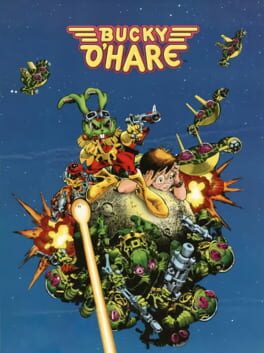

This video game is based on the cartoon television series Bucky O'Hare and the Toad Wars under license from Hasbro, Inc. While it is generally classified as a scrolling fighting game, utilizing a Final Fight-esque landscape, the player's character is also armed with a laser gun, adding in elements of a scrolling shooter. However, if the character is extremely close to an enemy, he will throw out his fists to attack - a precursor to the characters featured in Metal Slug, who use knives in close combat. Much like the cartoon, Bucky O'Hare features colorful animation, and voice actors from the series were hired to participate in the game's cut scenes. The player chooses from five protagonists: Bucky O'Hare, the heroic rabbit captain of the space ship Righteous Indignation; Jenny, an "Aldebaran cat" and telepath; Dead-Eye Duck, a four-armed mallard; Willy, a kid from earth that replaced their engineer, and Blinky, a one-eyed android. As in the television series, the characters must stop the Toad Empire from invading extraterrestrial planets and enslaving their peoples; to do so they must shoot their way through an army of brainwashed toads to destroy their evil leader, a computer program known as "Komplex" and release the "Interplanetary Life Force." The enemies, among them Al Negator, Toadborg, Total Terror Toad, a "Cyborg Spider", the various varieties of Toad Storm Troopers, the Toads' Air Marshall, and "Komplex-2-Go" who featured in the comic book and cartoon series continuities.
Reviews View More
A shooter crossed with a Beat Em Up. Incredible music, beautiful vibrant colors, and a style of it's own. I love this game
